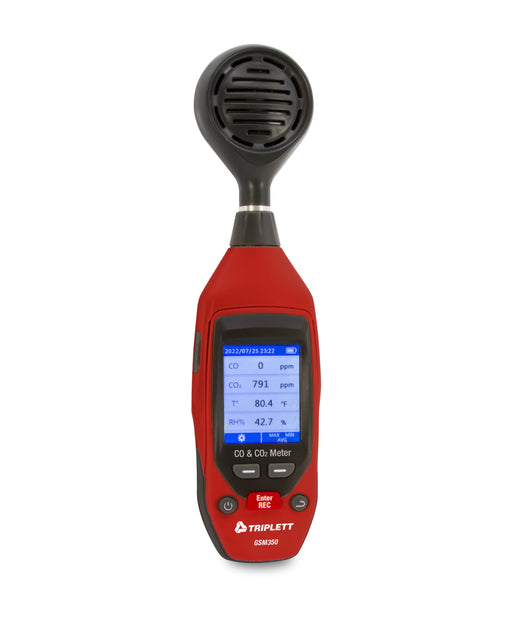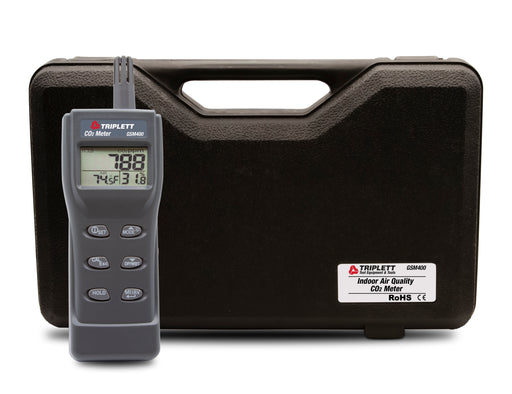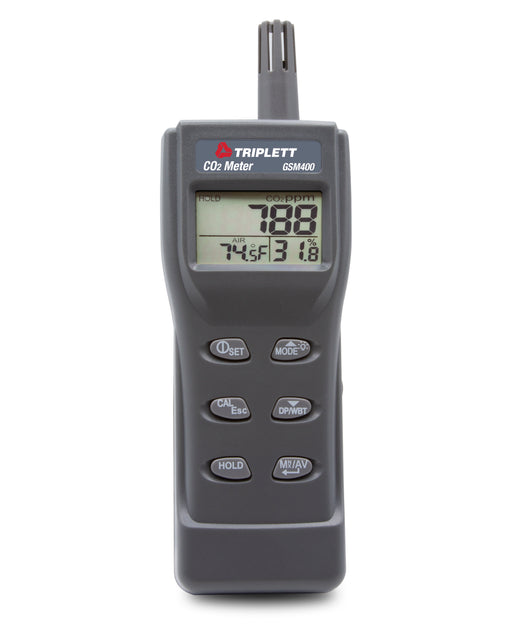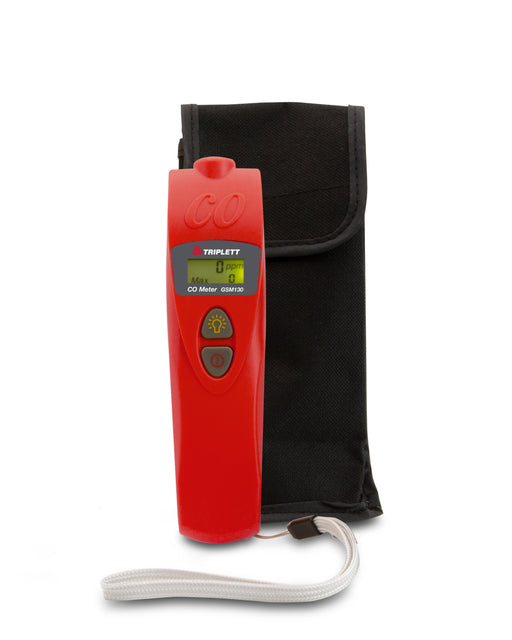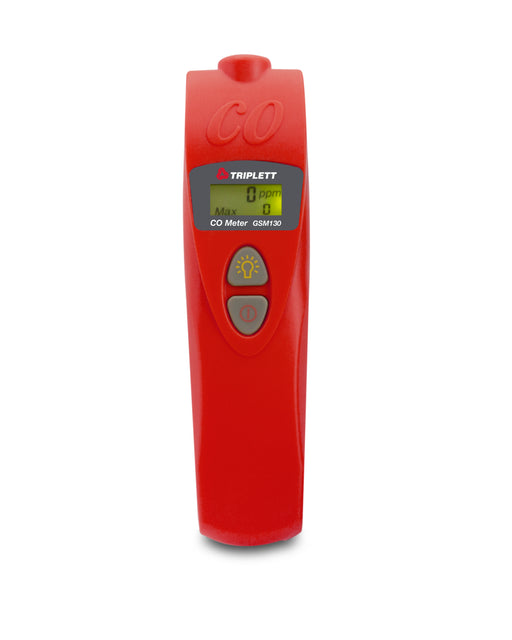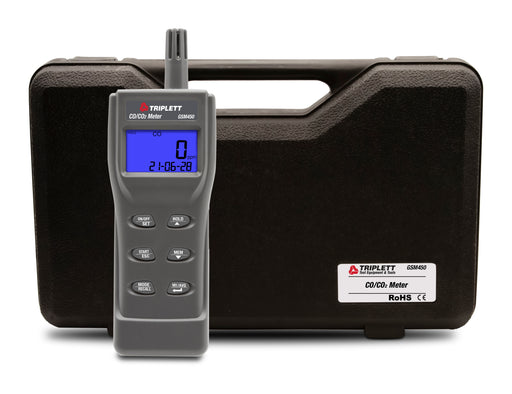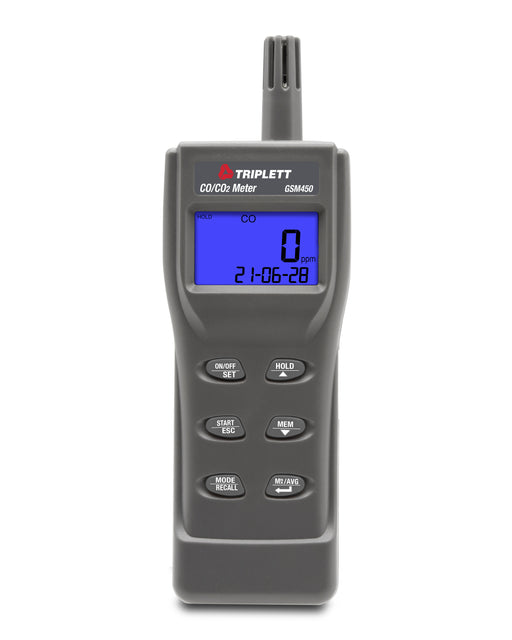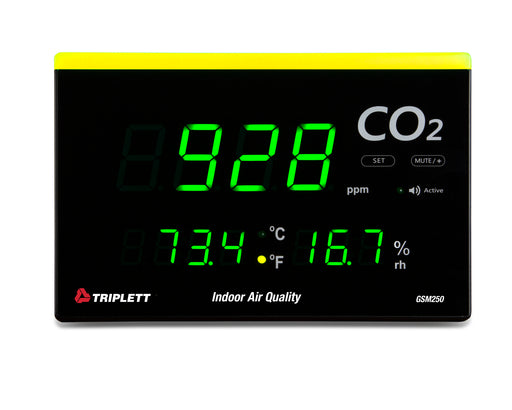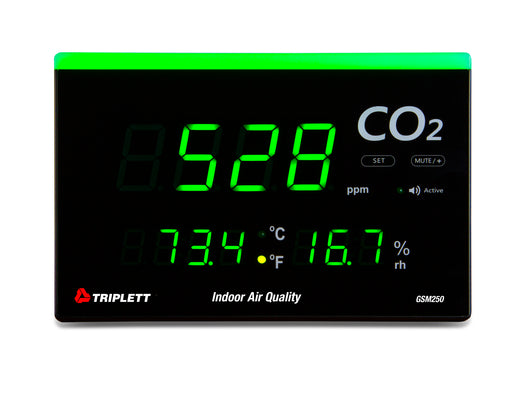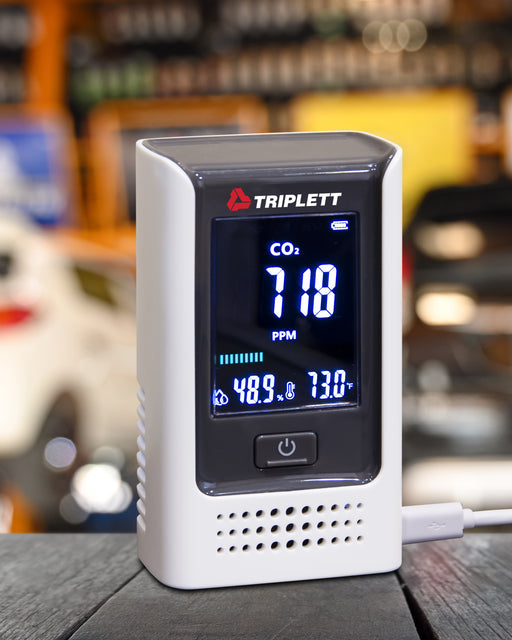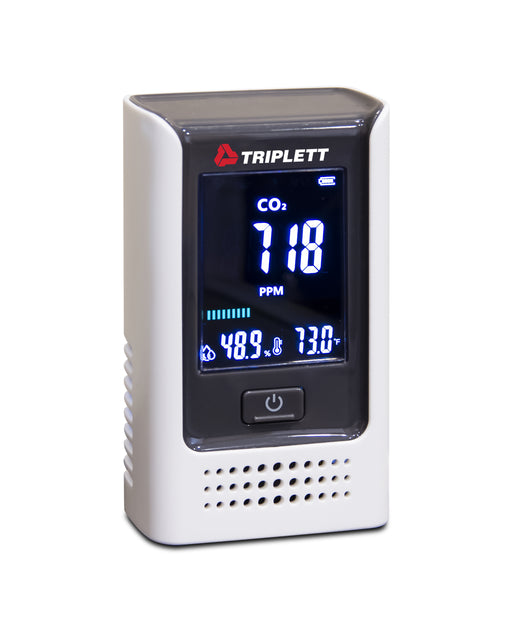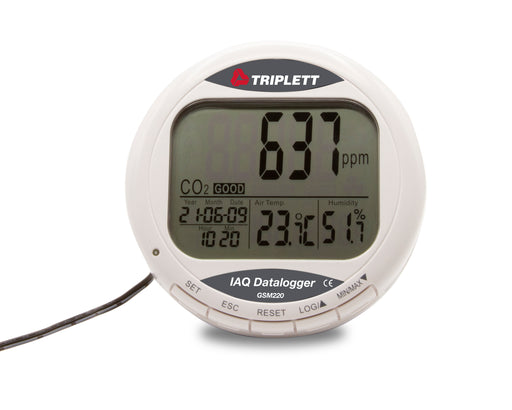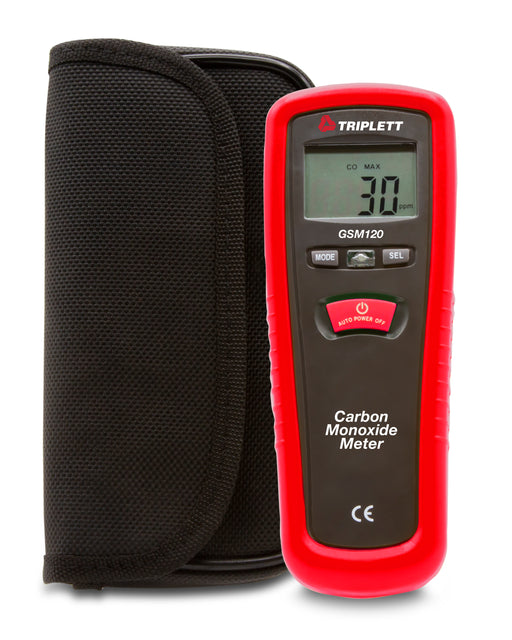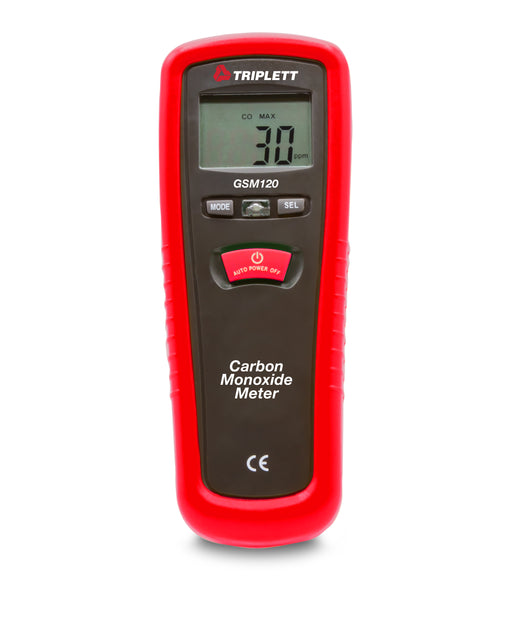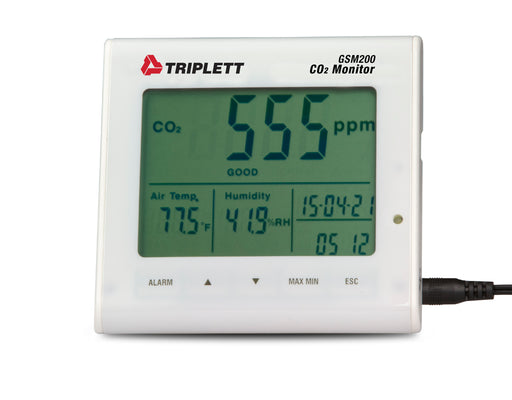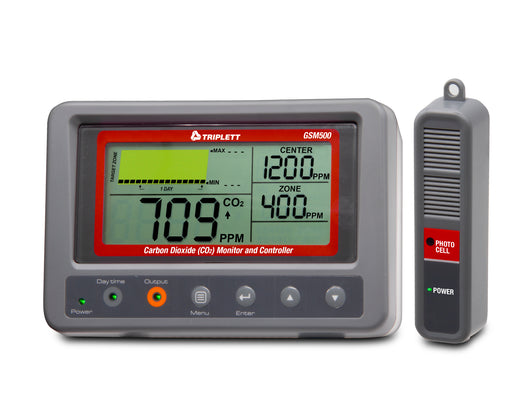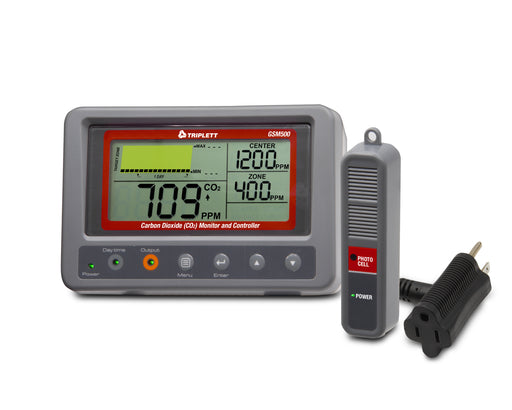Know More About Triplett CO and CO2 Meter
What is a carbon dioxide meter and carbon monoxide Meter?
A carbon dioxide (CO2) meter and a carbon monoxide (CO) meter are devices designed to measure and monitor the levels of these gases in the surrounding air. While both gases are colorless and odorless, they differ in their sources and potential health effects.
A carbon dioxide meter, also known as a CO2 meter, CO2 Detector or CO2 monitor measures the concentration of carbon dioxide in indoor environments.
A carbon monoxide meter, also referred to as a CO meter, CO Monitor or CO detector measures the concentration of carbon monoxide gas in the surrounding air.
How do a digital Carbon Monoxide and Carbon Dioxide detector work?
The carbon Monoxide meter has a silicon microchip that sends an electric charge to other parts of the meter. A CO meter is a detector that produces an alarming sound when it identifies the CO gas concentration in the atmosphere. It measures the carbon monoxide components in parts per million (ppm). Indoor CO2 meters are usually measured with non-dispersive infrared (NDIR) or electrochemical energy. At Triplett, we provide handheld CO and CO2 measuring devices that are equipped with non-dispersive infrared (NDIR) sensors. These sensors feature an infrared source, a bandpass filter, a detector, and a light tube. The target gas, CO or CO2, gets identified through the filter wavelength. For instance, the wavelength for CO2 gas is 4.26 µm, and for CO gas is approximately 4.61 µm. Both these wavelengths are not commonly absorbed by other gases found in the atmosphere or moisture. This helps minimize the chances of cross-sensitivity.
When the meter is in operation, the sensor detects the gas and pumps it to the light tube, which absorbs a certain wavelength. This absorption is converted into the electrical output, which alarms the user of the increased or normal concentration. The output is usually measured in parts per million (ppm).
What is the purpose of the CO2 and CO Meter?
Co and CO2 measurement devices are advanced sensors that help in identifying the air quality. When carbon dioxide in the air rises, the quantity of volatile organic compounds (VOCs), odors, and other micro-organisms in the air also rise. The purpose of these sensors is to detect the amount of carbon dioxide and other harmful and poisonous gases present in the air.
What are the benefits of NDIR CO Detectors and CO2 Meters?
Non-dispersive infrared (NDIR) carbon monoxide (CO) detectors and carbon dioxide (CO2) meters offer several benefits compared to other detection technologies. The following are the benefits of using NDIR CO and CO2 monitor.
- The NDIR sensors consume less power for operation, which perfectly meets the increasing demand for low power devices.
- Our Industrial CO testers and CO2 meters have fast stabilizing times, which is the minimal time needed for the sensor to switch from cold and hot conditions to take the measurement.
- Our indoor air quality meters can respond to high CO2 concentrations ranging from 500 ppm to 100% volume.
- These meters are compact sized and easy to carry around the areas where the gas is to be measured.
- These portable air quality meters assure long term stability as well as accuracy.
Why is Carbon dioxide and Carbon Monoxide Detection Important?
Carbon monoxide is a toxic gas because it is combustible. Carbon monoxide poisoning has been one of the key concerns among employers across the world. Many people have already lost their lives due to carbon monoxide poisoning. The gas is generally produced by equipment and tools that are burnt on fossil fuels. High carbon monoxide concentration may lead to dangerous consequences. To avoid this, the Occupational Safety and Health Administration (OSHA) recommends employers take all necessary measures to protect the workers from carbon dioxide poisoning. Auto shops, mining areas, and ice rinks are common places where high concentrations of carbon monoxide are generally found.
Carbon dioxide is used as a refrigerant in many industries. The gas is also naturally produced in the atmosphere by plants and by human bodies during respiration. A high concentration of carbon dioxide in an area will lead to depletion of oxygen, which will make it difficult for humans to breathe in.
Triplett provides some of the best indoor quality meters that help measure the concentration of carbon monoxide and carbon dioxide in the air. Contact us today to know more. Our experts can help you choose the best suitable product for your application.
What Are Battery-operated CO and CO2 Detectors?
A battery-operated CO and CO2 detector is a portable device used to monitor levels of carbon monoxide and carbon dioxide in the air. It is powered by batteries. These detectors are independent of electrical outlets, offering flexibility in placement within various indoor environments such as homes, offices, or classrooms. Equipped with specialized electrochemical sensors for CO and infrared sensors for CO2, these detectors continuously analyze the air composition. When concentrations of carbon monoxide or carbon dioxide rise to potentially dangerous levels, the detector activates an audible alarm, typically a loud beeping sound, alerting occupants to the presence of these harmful gases.
Which is the Appropriate Location to Position CO and CO2 Meters?
These meters must be placed in areas where combustion appliances are present. Some places include furnaces, water heaters, stoves, and more. Also, you can place these meters in indoor spaces such as at homes, offices, and classrooms, to monitor air quality.
How to Identify Carbon Monoxide Poisoning?
Identifying carbon monoxide poisoning involves recognizing symptoms and being aware of potential sources. Headache, dizziness, nausea, and weakness are some symptoms. If you suspect continuous carbon monoxide exposure, evacuate the area immediately and seek fresh air. Install carbon monoxide detectors in critical areas of the facility and ensure proper ventilation in spaces with potential sources of CO, such as gas appliances or heating systems.
Is it Possible to Use CO and CO2 Meters Interchangeably?
CO and CO2 meters serve different purposes. CO meters are designed to detect carbon monoxide, while CO2 meters measure carbon dioxide levels. They are not interchangeable, and each is designed for its specific application.
How Often Should I Calibrate CO and CO2 Meters?
The recommended frequency for calibrating CO and CO2 meters can vary depending on the specific model specifications and manufacturer's guidelines. It is advisable to calibrate these meters annually to get accurate and reliable readings. However, it's a good practice to refer to the user manual or documentation provided by the manufacturer for precise instructions on calibration frequency and procedures for your particular CO and CO2 meters.
How to Maintain CO and CO2 Meters?
Maintaining CO and CO2 meters involves attention to detail and several essential steps to ensure proper functioning. Conduct regular visual inspections of these devices for any physical damage or contamination. Follow the manufacturer's guidelines for keeping the sensor surfaces clean. Replace batteries as recommended to prevent power failures. Additionally, adhere to the manufacturer's recommended calibration schedule to guarantee accurate readings and maximize their longevity and reliability in monitoring gas levels.
Can CO and CO2 Meters Detect Other Gases?
Basically, CO and CO2 meters can detect carbon monoxide and carbon dioxide levels in the air. However, some advanced models have additional sensors for detecting other gases. You must check the specifications provided by the manufacturer for each specific meter to determine its capabilities.
Do Regulations or Standards Exist for CO and CO2 Meters?
Regulations and standards do exist for CO and CO2 meters. Different regulatory bodies and organizations have established guidelines to ensure the accuracy, reliability, and safety of these devices. Manufacturers design their CO and CO2 meters in compliance with these standards to meet specific performance criteria. Users should refer to relevant regulations and standards, such as those set by safety organizations or governmental agencies, to ensure that the selected meters adhere to the required specifications for effective gas detection and monitoring.
Browse More Building, Maintenance & Environmental Collections
Inspection & Laser Distance Meters:
| Borescope Camera | Photo & Contact Tachometers |
| Manometers | Laser Distance Meters |
Gas Meters:
| Natural Gas Detector & Pen | Formaldahyde Meters |
Environmental Meters:
| Sound & Noise Level Meters | Humidity Indicators & Meters | Non-Contact & Contact Thermometers |
| Particle Monitoring | Moisture Meters | Lumen Meters |
| Propeller Anemometers | Hygro-Thermometers | Digital Hygrometer |
Water Quality:
| PH and Conductivity Meters |


